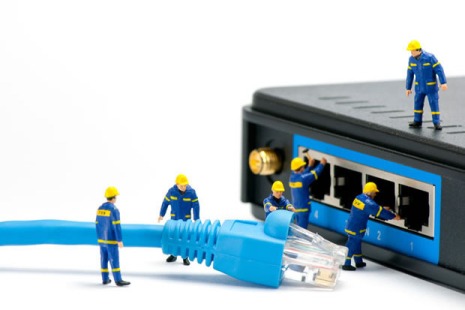Improve the security of a router is required to strengthen our network infrastructure and save us headaches in the future. The router is one of the great forgotten by the user of on foot although it is a critical piece because it is the gateway to our digital home.
If your operator has installed a new router to you or if you bet, as it is recommendable to acquire a model of a specialized manufacturer that will offer better performance and greater possibilities, t is required for any user a few minutes in its configuration, performing - as a minimum - these five steps that today we remind you.
Update the firmware
The router has a set of operating instructions and stored in a memory chip inside the device tools. Firmware updates are quite stable and therefore little frequent but updating is suitable because it is unclear how long has been the router on the shelves of the operator. In addition, there are exploits and vulnerabilities that arise in the router’s firmware.
Change the default login
The easiest access to the router is through a web interface access y means of its IP direction (192.168.0.1, 192.168.1.1 or similar). Almost all routers of the same brand or model have a username/password given programmed to facilitate access to the router.
This type of access is public knowledge and it is usually as simple as the familiar “admin”. Simply search the Web to know them and there are even specialized tools such as RouterPasswords which provides details of any brand and model name. It is necessary, therefore, at least change the password as soon as possible to prevent unauthorized access to the router and thus control your entire network. The moral is: “change the administrator password before someone changes it”.
Set a secure Wi-Fi password
Like the password to access the router, it is essential to change the password that come default access to Wi-Fi wireless network. Although the situation has improved, there are still many operators that use less secure protocols and passwords that can be easily knowable. Or they are placed on a sticker on the same router, perhaps accessible to third parties that you want that they do not know it.
All current routers (or Wi-Fi access points) support strong encrypted like WPA2 with up to 63 characters. It is the Protocol that we should use, totally eliminating the too usual WEP. As for the password, you know, it is useless to use a strong protocol if we put the name of our dog, known to all our neighbors. The longer must be better, combining uppercase and lowercase letters, symbols and numbers or generate random keys with programs like 1Password.
Change the SSID or hide it
The Service Set Identifier is a name included in all packages of a wireless network. With up to 32 alphanumeric characters refer the name of our wireless network or other that are within reach of a device or computer. The name included by default, usually reveals the model and manufacturer, something that we must not disclose, even if we have not changed their given access.
In addition to changing its name, configuring routers allow the option to hide the SSID to prevent display as wireless network. There are special programs that can trace it but it is a recommended option.
Disable remote access to the router
99 percent of home users do not need this feature that allows access to the router from anywhere with Internet access. Since the router not only functions as the brain of the home network management, but also as firewall, remote access can be another door open for third parties to gain full access to the home network. Make sure this feature is disabled.
There are more mechanisms to ensure our router and thus the home network or a professional network but exposed tasks are those of the essentials that any user can perform in 10 minutes with great benefits.
